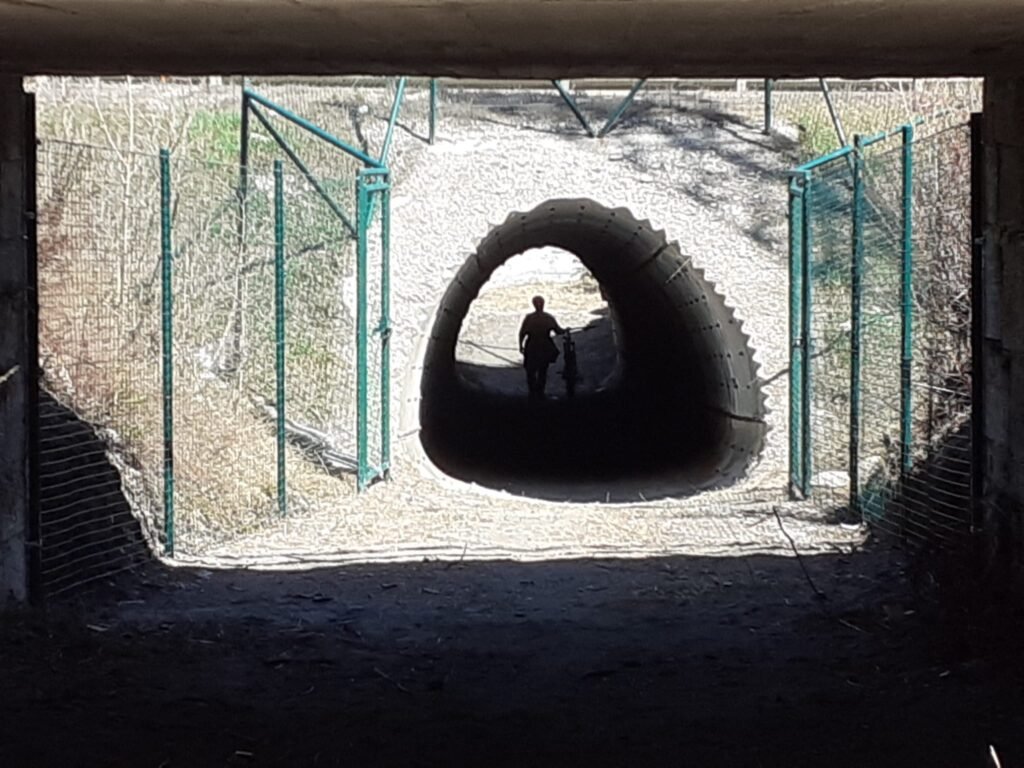Preventing accidents with wildlife – New experiment in the Susa Valley, Piedmont
In the Susa Valley, Metropolitan city of Turin and ANAS testing reflective verge markers
Blue reflective verge markers along roadway delineators deter wild animals from crossing busy suburban roads. The light from vehicle headlights reflected by the reflectors creates a protective optical barrier, which discourages animals from attempting to cross, thus reducing the risk of accidents. We are talking about one of the actions for the prevention of road accidents with wildlife in the Upper Susa Valley envisaged by an innovative project that the Metropolitan City of Turin and ANAS have carried out and completed in recent days along the stretch of State Road 24 from Gravere to Cesana Torinese and on State Road 335 between Oulx and Bardonecchia. The works were financed by the LIFE WolfAlps EU project, dedicated to improving the coexistence between wolves and human activities, whose action C6 is aimed at reducing the fragmentation of natural habitats and protecting the fauna of the Upper Susa Valley.


Positioning of the reflective verge markers. Photo: Città metropolitana di Torino.
The placement of blue reflective verge markers on the roadway delineators is not the only action taken to reduce the number of accidents and the mortality of wild animals. Working together with ANAS, RFI and SITAF, technicians from the Metropolitan City and the Cottian Alps Protected Areas Management Authority carried out inspections at critical points frequented by wolves and ungulates who were victims of accidents. In those places, nets were installed to prevent the animals from passing and direct them towards safe routes: some subways that were already present were cleared of vegetation and rubbish, creating protected paths to avoid possible collisions. Where it was not possible to install nets, the placement of reflectors was planned and carried out in recent weeks.


Interventions in Savoulx: before and after the cleaning of subways. Photo: Città metropolitana di Torino.
Action C6 of the LIFE WolfAlps EU project and the collaboration initiated by the Metropolitan City of Turin with ANAS, RFI and SITAF stem from the need to reduce environmental fragmentation in the Upper Susa Valley: the conformation of the Alpine slopes and the presence of roads and tracks force wild animals to cross communication routes in order to survive, to feed themselves, to defend their territory and, above all, to meet other members of their own species. The journeys can have dramatic results, both for wildlife and for bikers. Road accident data collected throughout the territory of the Metropolitan City of Turin since 2002 show that the wildlife species most affected are roe deer and wild boar, but deer, wolves and chamois are also hit. The highest density of accidents in the 312 municipalities of the metropolitan territory occurs in the Upper Susa Valley, in sites where there is no escape for an animal wishing to cross a road or railway.
AWARENESS CAMPAIGN FOR DRIVES
It is clear that the most powerful tool for reducing accidents is the awareness of each driver that he or she is not the only user of the roads: this is why, along State Road 24 and along Provincial Road 214, again as part of the LIFE WolfAlps EU project, the collaboration between the Metropolitan City of Turin and ANAS has enabled the installation of signs that, through an image and a slogan with a strong emotional impact – “Slow down! Speed kills!” – reminds drivers that they are crossing an area where the risk of impact with wildlife is high.

Panels placed for the awareness campaign. Photo: Città metropolitana di Torino.
The communication campaign aims to raise awareness of the importance of prudent driving, the duty to observe speed limits and signs, the need to maintain concentration when driving, and the special attention that needs to be paid at night, at dusk and dawn, when animals most frequently cross the roads. If an animal crosses the road, one should slow down, let it cross and check if other animals are coming. Staying in your lane and not trying to chase the animal with your car are basic behaviours, which should not even be called out, but, when it comes to wildlife, one should never take anything for granted. In the event of an accident, you should immediately call 112 and follow the instructions given by law enforcement officers. For your own safety, it is better not to get out of the car and, above all, not to approach a wounded animal, whose reaction to the presence of man could be unpredictable. In such cases it is better to leave it to those who have the professional knowledge to intervene.
The work carried out by the project partners under Action C6 can count on the support of the Fondazione Capellino, an independent, non-profit organisation, which, as co-funder of the project, contributes to the development of the various LIFE actions.









